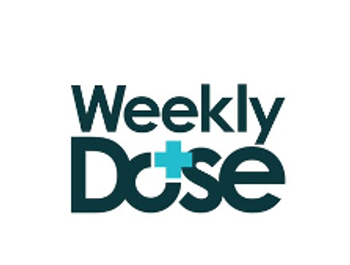
Dupilumab Reduces COPD Exacerbations for Patient with T2 Inflammation in Landmark Phase 3 Trial
Findings of the BOREAS trial of patients with COPD and type 2 inflammation make dupilumab the first biologic to significantly reduce exacerbations by 30% vs placebo.
In the phase 3 BOREAS clinical trial study of patients with
The findings were published in the New England Journal of Medicine and will be presented as a late-breaking abstract during a session at the 2023 American Thoracic Society International Conference, which runs from May 21-24 in Washington, DC.
Patients with COPD often have significantly reduced lung function and are at a risk of exacerbation of symptoms such as cough, dyspnea, or sputum purulence. As these exacerbations worsen, patients are at an increased risk of accelerated declines in lung function and a greater risk of death from any cause, even when treated with inhaled medications.
Increasing evidence suggests that type 2 inflammation may be a driver of COPD in some patients, with patients who show evidence of type 2 inflammation at an increased risk of exacerbations, the authors noted. A range of cytokines and immune cells are commonly elevated in patients with type 2 inflammation, with interleukin (IL)-4 and IL-13 specifically promoting eosinophil and type 2 inflammatory cell infiltrates in the lungs. These infiltrates are thought to be involved in the mechanisms of COPD.
Dupilumab, a fully human monoclonal antibody that blocks the shared receptor component of interleukin (IL)-4 and IL-13, mitigates type 2 inflammation broadly. The
The randomized, double-blind, phase 3 trial included 939 patients with COPD who had a blood eosinophil count of at least 300 cells/µL and an elevated exacerbation risk despite the use of standard triple inhaled therapy. Patients were randomized to receive either 300 mg of dupilumab (n = 468) or a placebo (n = 471) subcutaneously every 2 weeks, with a primary end point of improvement in the annualized rate of moderate or severe COPD exacerbations.
FINDINGS
In the dupilumab cohort, the annualized rate of moderate to severe exacerbations was 0.78 (95% CI, 0.64-0.93) vs 1.10 (95% CI, 0.93-1.30) in the placebo group. These results make dupilumab the first investigational biologic for COPD that has significantly reduced moderate or severe acute exacerbations by 30% vs a placebo.
Secondary end points included changes in prebronchodilator forced expiratory volume in 1 second (FEV1) and quality of life as determined by scores on the St. George’s Respiratory Questionnaire (SGRQ) and the Evaluating Respiratory Symptoms in COPD (E-RS–COPD) scales. On these scales, lower scores indicate better quality of life and less severe symptoms, respectively.
"These results make dupilumab the first investigational biologic for COPD that has significantly reduced moderate or severe acute exacerbations by 30% vs a placebo."
Regarding lung function, the prebronchodilator FEV1 increased by a least-squares (LS) mean of 160 ml (95% CI, 126-195) from baseline to week 12 in the dupilumab cohort, vs 77 ml in the placebo group. The difference in FEV1 was seen within 2 weeks of treatment initiation and persisted through week 52 of the study.
Improvements were also seen in SGRQ and E-RS–COPD scores. At week 52, the SGRQ score among the dupilumab group had improved by a LS mean of –9.7 (95% CI, −11.3 to −8.1) vs −6.4 (95% CI, −8.0 to −4.8) in patients who received a placebo. Improvements were seen as early on as week 4 following treatment initiation. By week 52, the E-RS–COPD score had improved by a LS mean of −2.7 (95% CI, −3.2 to −2.2) in the dupilumab cohort and −1.6 (95% CI, −2.1 to −1.1) in patients receiving a placebo.
Both groups had similar rates of adverse events that led to discontinuation of treatment, serious adverse events, and adverse events leading to death.
A notable study limitation is the timeline, with the trial taking place during the COVID-19 pandemic. The pandemic affected clinical research on a broad scale and patient exposures and behaviors, possibly contributing to difficulties in recruitment and lower reported COPD exacerbation frequencies, the authors noted. While the overall incidence of exacerbations in the trial was low, treatment with dupilumab had a significant effect in the study population.
Overall, the findings suggest that dupilumab may effectively reduce exacerbations, improve lung function, and improve health-related quality of life among patients with COPD and type 2 inflammation.
Reference: Bhatt SP, Rabe KF, Hanania NA, et al.
Newsletter
Enhance your clinical practice with the Patient Care newsletter, offering the latest evidence-based guidelines, diagnostic insights, and treatment strategies for primary care physicians.






























































































































































































































































































